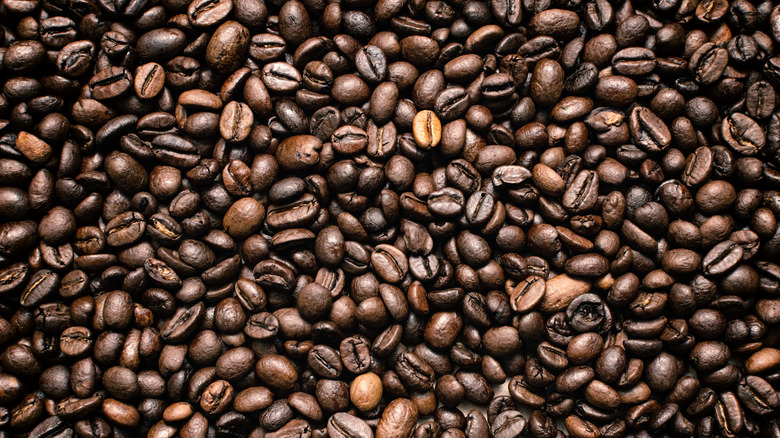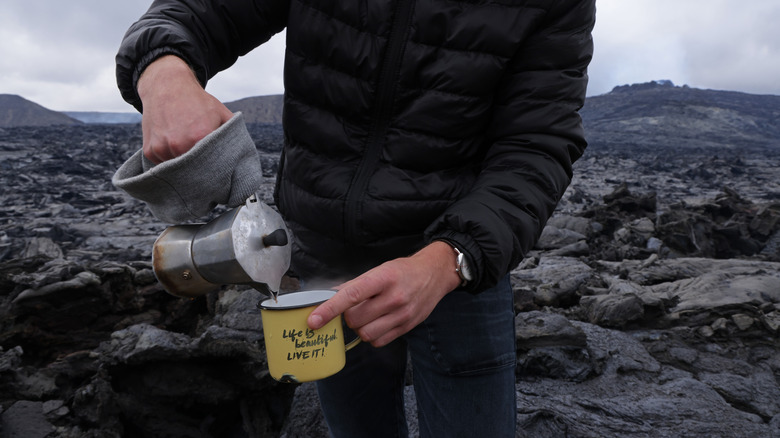Is It Actually Possible To Remove Caffeine From Coffee?
It's safe to say some of us have never seen a fresh coffee bean before. Let's not forget that the beans are found inside of coffee cherries — a wine-colored fruit that surrounds the bean before it's harvested and roasted into the dark, woodsy grounds we know and love (via Serious Eats).
We're often thousands of miles away from renowned hubs of coffee production — Guatemala, Brazil, Ethiopia — and sometimes just as far removed from the intricate, labor-intensive work that goes into making coffee possible. Case in point: How do you decaffeinate your brew? The average cup of coffee holds around 95 milligrams of caffeine, while a decaf cup contains just 2 milligrams. A cup of decaf espresso has a whopping zero grams of caffeine, according to Mayo Clinic. So, is it actually possible to take one of the world's most widely consumed beverages and safely zap away its most defining ingredient?
A history of decaffeination
Although coffee goes back centuries — it's said to have originated in Ethiopia — the decaf version didn't surface until the 20th century (via National Coffee Association). In 1903, Ludwig Roselius, the owner of a German coffee company, stumbled upon a batch of caffeine-free coffee when his own supply was submerged in seawater. According to the BBC, it was purely accidental.
However, this discovery led to Roselius experimenting with benzene in the pursuit of a decaffeinated concoction. Soon, Roselius invented a decaffeinated coffee using the benzene-laced chemical treatment. He marketed this new beverage as a healthier option for the drinker's "heart and nerves," according to Atlas Obscura. The method was effective in removing the caffeine, but also notably dangerous: Benzene has since been confirmed as a cancer-causing substance, according to the Centers for Disease Control and Prevention. The chemical is also known to increase risk of anemia and compromise the immune system. These days, different substances are used to drain caffeine from the coffee bean.
Newer methods for safer decaf
According to Live Science, methylene chloride — also found in plastic and rubber substances — is one of the chemicals now used to decaffeinate coffee. While not a carcinogen like benzene, it has caused concern among the public. Though "large amounts" of the chemical can damage one's central nervous system, according to the CDC, the federal government has placed limits on how much can be present in decaffeinated coffee.
However, there are other prominent methods for removing caffeine: the Swiss water process, for example, uses no chemicals at all, according to the Financial Times. The company itself, Swiss Water, says it uses a "carbon filter" to remove caffeine as the beans are soaked in water. In all, decaffeination is certainly possible — though some caffeine usually remains in your coffee nonetheless. The National Coffee Association estimates decaffeination processes remove about 97% of caffeine from the coffee beans. But how that decaffeination is done — whether chemically, or through the Swiss Water process — might be of interest to you next time you grab a steaming hot cup.


